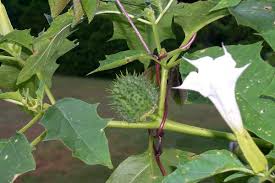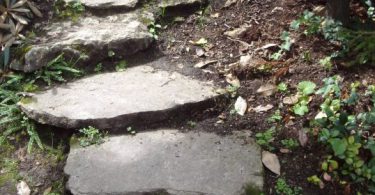An acute disease is one which comes on suddenly, runs a certain course and results in either restoration to health or in death. Hahnemann asserted very correctly about acute diseases (§73) as “….As regards acute diseases, they are either of such a kind as attack human being individually, the exciting cause being injurious influences to which they were particularly exposed…. are generally only a transient explosion of latent psora, which spontaneously returns to its dormant state if the acute disease were not of too violent a character and were soon quelled.”
Approach to Acute Diseases
Acute diseases are more quickly comprehended than the chronic ones since acute symptoms are more recent and more violent and impress the patient more vividly. All the phenomena and deviations from the state of health that have been recently lost are still in the memory of the patient and relatives. Therefore, much less time is required for tracing the full picture, it requires only few questioning because almost everything is self evident.
For e.g. a patient comes with a severe back pain after caesarean section of forceps delivery. Hypericum in higher potency may be the top rank remedy for this (Kent’s Repertory) — Back –Pain – Sacral region – instrumental delivery after: HYPER. A patient may come with urticaria after eating meat. Ant-c. is the one and only medicine with 3 marks (Kent’s Repertory) — Skin –Eruption – Urticaria – meat, after. Hahnemann told about the importance of symptoms (§ 153) “…..the more striking, singular, uncommon and peculiar (characteristic) signs and symptoms of the case of disease are chiefly and most solely to be kept in view.”
Applied Classification of Acute Diseases
Broadly from all practical purposes, acute diseases may be classified as follows:
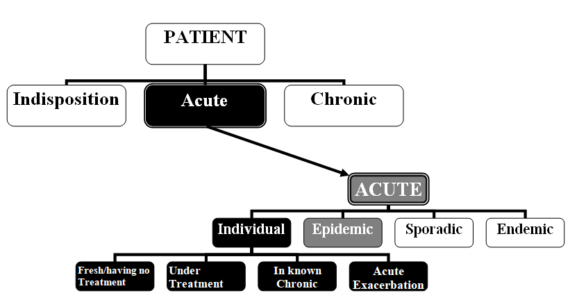
Steps in Treating Acute Cases
- T. Kent asserted, “If you neglect making a careful examination, the patient will be the first sufferer, but in the end you yourself will suffer from it and homoeopathy also.”
While attending to an acute case, the physician should limit his inquiry to the recent deviations from the health. Since acute diseases demands immediate medical intervention, no one should waste time in collecting details of acute totality. The physician should consider two important aspects of the patient:
- Commonly presenting complaints (particulars) can be presented in four major components e.g. causation, location, sensation, modalities and ‘concomitants’ if any.
- But the features at general level is to be considered in two broad aspects:
- Changes on the physical plane, like appetite, thirst, thermal reactions, bowel movements etc.
- Changes on the mental plane, like irritability, depression, fear etc.
Management of Acute Diseases
- Homeopathic medicine in suitable dose, potency and repetition
- Diet and regimen — Acute situations caused by lifestyle or dietary mistakes, exciting causes of such acute febrile conditions are excesses or privation in eating, traumatisms, chilling or overheating, fatigue (from poor lifestyle choices), strains from lifting, etc. or else psychic agitation and upsets
- Supplementation as per need
- Follow up according to presenting symptoms and progress of the disease
Management of Acute Diseases — Epidemic, Endemic and Sporadic
- The distinguishing characteristics of any epidemic/pandemic/endemic sickness will be secured in the composite image of the totality of symptoms of several patients of different bodily constitution and will reveal the remedy for that epidemic.
- That remedy will act as preventive and curative for the particular epidemic/pandemic/ endemic in spite of antigenic drifts result from point mutations
- Genus epidemicus has to be found out in the specific area in a given time and it could be the best prophylactic remedy
Acute Diseases in a Known Chronic Case
Two dissimilar diseases meeting together in human economy:
- Of equal strength or older one is stronger, hardly any new disease appears
- But the new one is stronger; old disease phenomena would to kept back and suspended by the accession of new stronger one, till the latter run its course or been cured, then the former weaker old chronic disease reappears uncured
Acute Intercurrent Remedies
Hahnemann asserted clearly (§38) that the stronger and dissimilar acute disease will postpone or suspend the old chronic and weaker disease. Thus, administering the constitutional/chronic remedy without having similarity with the acute totality during emergencies such as dangerous pathological crisis, severe traumas, overexposure, serious injuries and virulent acute miasms is a serious mistake. The skillful use of intercurrents is an essential method in the classical homeopathy, an aspect of complete case management. Acute intercurrent remedies are used during temporary disruptions of the chronic treatment. For e.g. taking cold in the stomach by eating fruits — Ars. These remedies are chosen because of the exciting cause and the recent acute symptoms so that they do not disrupt the deeper layer associated with a different fundamental cause and with the constitution. These intercurrents act superficially so that they do not interfere with the constitutional treatment.
Some homeopaths opine that acute remedies may disrupt chronic cases. This acute illness shows a different clinical picture from the chronic natural disease. As mentioned above, if anyone considers the exciting cause and recent symptoms of the acute syndrome as the basis for selecting a remedy, not according to the chronic case history, the intercurrent will not disturb the chronic condition. But if, during an acute attack, the homeopath continues to administer a deeper-acting chronic remedy, which envelopes the previous deeper and often different fundamental causes, this may disrupt the natural symptom layers.
J T Kent opined that it is important to avoid getting confused by two disease images that may exist in the body at the same time. A chronic patient, for instance, may be suffering from an acute disease and the physician on being called may think that it is necessary to take the totality of the symptoms; but if he should do that in an acute disease, mixing both chronic and acute symptoms together, he will become confused and will not find the right remedy”.
The two things must be separated. The group of symptoms that constitutes the image and appearance of the acute miasm must now be prescribed for. The chronic symptoms will not, of course, be present when the acute miasm is running, because the latter suppresses or suspends the chronic symptoms. This illustrates the doctrine of not prescribing for an acute and chronic trouble together. The acute disease is never complicated with the chronic; the acute suppresses the chronic and they never become complex. Prescribe first for the acute attack, and the symptoms that belong to it.
When these remedies have completed the cure of the acute disease, the symptoms of the original chronic disease will, however, always be found somewhat varied (altered). The homeopathic physician will then choose his antipsoric remedy according to the totality of remaining symptoms, and not simply give the one he intended to give before the intermediate disease appeared. After the acute event (a strong one, that is), one must retake the case with special emphasis on any newly appeared symptoms. The most recent and permanent symptoms point to the next remedy. Some of the chronic symptoms also persist during an acute crisis and thus obtain a higher value for the selection of the simillimum.
Examples of causality include
- Acute physical trauma – In these cases, the etiology and the organ or tissue affected will help us identify the remedy
- Emotional trauma – The “Mind” section of the ‘Kent’s Repertory’ gives many examples of emotional causalities. The patient’s reaction to these triggers will help you select the appropriate remedy.
- Poisons and Vaccinations – These include cases of street drug use, allopathic drug use, food poisoning, insect bite etc.
Acute Exacerbation of Known Chronic Cases
The acute exacerbations (expressions) of a chronic disease have different management from the ‘acute diseases in a ‘known chronic disease’. The existing chronic diseases appear as a severe and crisis state with regard signs and symptoms and patient’s discomfort.
- Stop the deep acting medicine and wait for recovery
- If the condition progressively worsen, administer medicine as per acute totality
- After recovery from acute crisis, administer old medicine or any other related indicated medicine
Applied Aspects of Relationship of Remedies
Deep-acting complementary remedies (constitutional and anti-miasmatic treatment) must remove the chronic underlying causes after the acute crisis is ameliorated. Let the constitutional factors, the nature of the disease, and the totality of the symptoms (§5, §6 and §7) be our guide to the homeopathic remedy, and you will have success both in acute disease in a known chronic case and/or acute exacerbation of known chronic cases.
Miasmatic Implication of Acute Diseases
Acute miasms, within a certain period after their contact with the organism, to a certain definite series of phenomena, terminate in complete recovery or in death. Our sole object in this context is to explore the logical sequence of, the ‘cause ‘and ‘effect of the cause’ in case of chronic diseases.

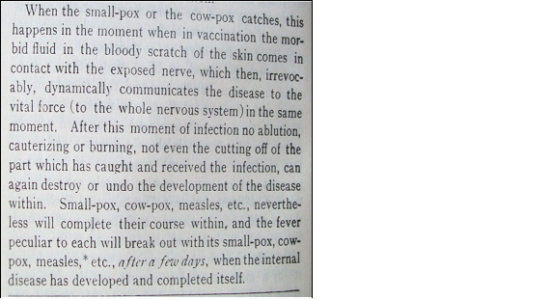
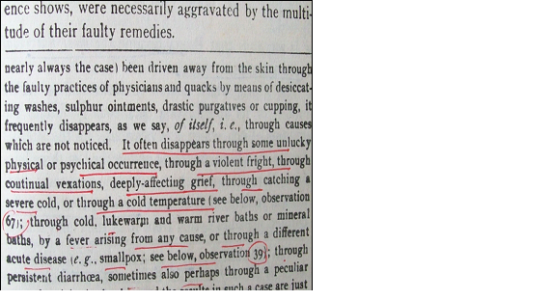
Excerpts from Hahnemann’s writing on Acute Miasm
Fixed miasm: The miasm of whooping cough, pox, measles etc. are termed as fixed as whenever the disease appears, it represents its old similar clinical manifestations more or less in a fixed manner.
Half spiritual miasm: The miasm of scarlet fever, chicken pox etc. is termed as ‘half-spiritual miasm’ as after completing their course in the system for a certain period, they die out leaving the organism if the patient does not die by that time.
Half acute miasm: The miasm of rabies is termed as ‘half-acute miasm’ as it takes a long time for the miasm to manifest symptoms, but once symptoms develop, the patient suffers like a sever acute disease and may also turn to death.
Methodology of Treatment
Respective nosodes (if available)/similar medicine should be prescribed to combat and remove the dyscrasia. Patients who have never been well since (NWS) a certain illness (acute miasmatic illness) is also very significant.
When acute miasmatic diseases complete their course especially without a judicious homeopathic treatment, leave the organism so shaken and irritated that with many who seem to be restored, the psora, which was slumbering (dormant) and latent before, awakes quickly, either into itch-like eruptions or into chronic disorders, which then reach a high degree in a short time, if they are not treated properly in an antipsoric manner. When such a patient dies after all unsuitable treatments, one may declare that the patient has died from the sequelae of whooping cough, measles, etc.
| Name of the Disease | Medicines Suggested |
| Typhoid Pneumonia Diphtheria Whooping Cough Small Pox C Pox Measles Mumps Tonsillitis |
Typhoidinum, Pyrogenum Pneumococcin, Tuberculinum Diptherinum, Lachesis, Lac caninum Pertussin, Drosera Melandrinum, Thuja Veriolinum, Vericella, Thuja Morbillinum, Carbo vegetabilis Parotidinum, Pulsatilla Streptococcin, Carcinosin, Tuberculinum |
Conclusion
The most important guidelines for acute diseases treatment are the influences that modify the sickness i.e. the modalities of time, temperature, motion, etc., the mental state of the patient and his subjective sensations followed by objective aspects of the sickness and the affected parts, sides etc. Last but not the least the concomitants if any. Regardless of this order, the most striking or peculiar symptoms are always the most important. We should emphasize that the proper use of homoeopathic medicines for acute diseases and an acute intercurrent in the treatment of a known chronic patient.




